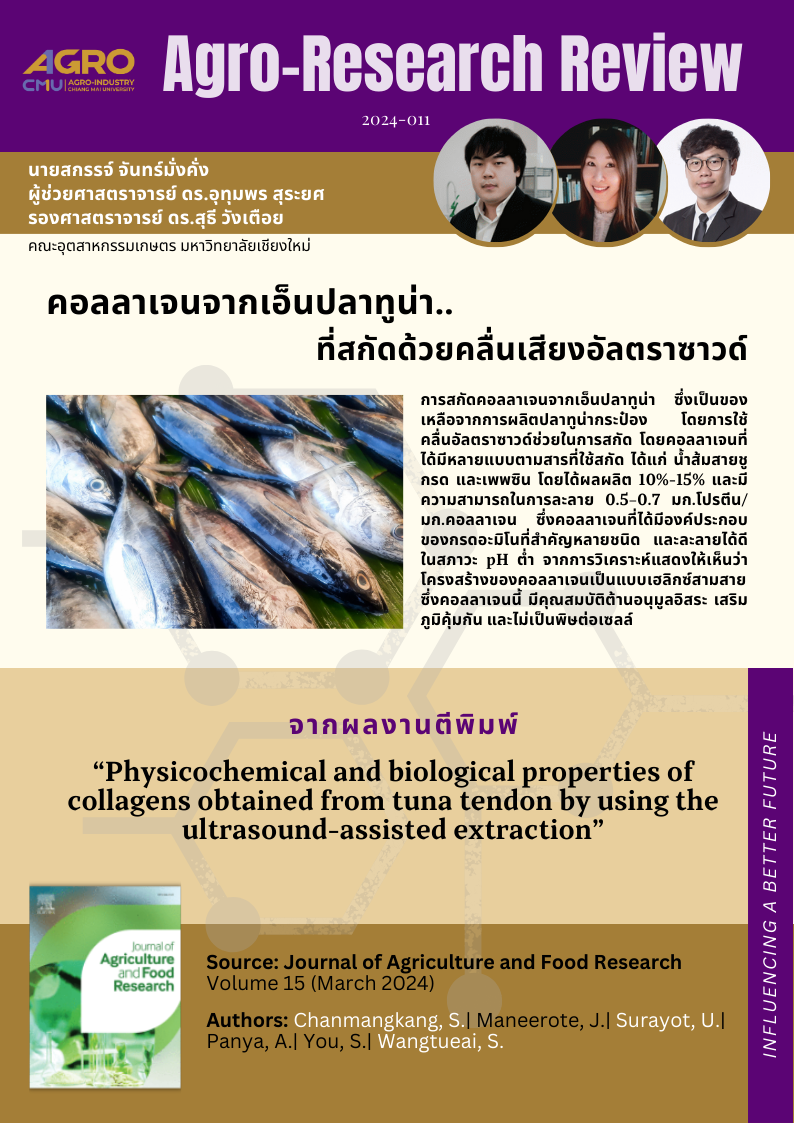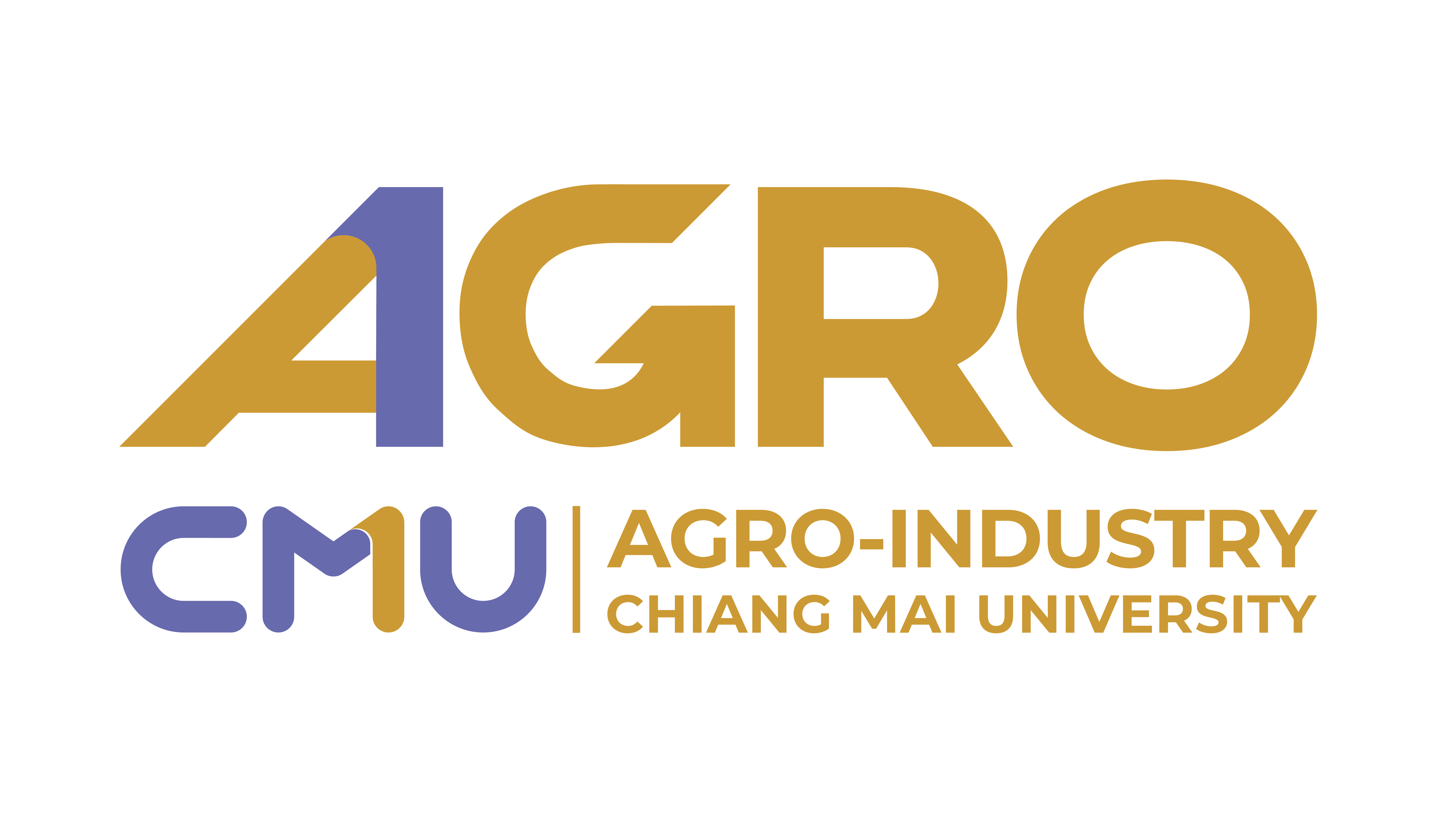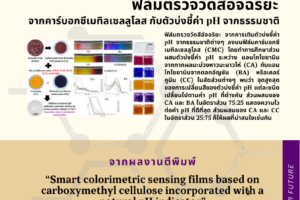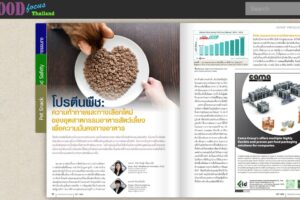
แนะนำงานวิจัย 2024-011 คอลลาเจนจากเอ็นปลาทูน่าที่สกัดด้วยคลื่นเสียงอัลตราซาวด์
- Categories งานวิจัย
- Date 12 พฤศจิกายน 2024
การสกัดคอลลาเจนจากเอ็นปลาทูน่า ซึ่งเป็นของเหลือจากการผลิตปลาทูน่ากระป๋อง โดยใช้คลื่นอัลตราซาวด์ช่วยในการสกัด โดยคอลลาเจนที่ได้มีหลายแบบตามสารที่ใช้สกัด ได้แก่ น้ำส้มสายชู กรด และเพพซิน โดยได้ผลผลิต 10%-15% และมีความสามารถในการละลาย 0.5–0.7 มก.โปรตีน/มก.คอลลาเจน ซึ่งคอลลาเจนมีองค์ประกอบกรดอะมิโนที่สำคัญหลายชนิด และละลายได้ดีในสภาวะ pH ต่ำ การวิเคราะห์แสดงให้เห็นว่าโครงสร้างของคอลลาเจนเป็นแบบเฮลิกซ์สามสาย คอลลาเจนนี้มีคุณสมบัติต้านอนุมูลอิสระ เสริมภูมิคุ้มกัน และไม่เป็นพิษต่อเซลล์
Collagen extraction from tuna tendons, a by-product of canned tuna production, was carried out using ultrasound-assisted extraction. The collagen obtained varied based on the extracting agents used, including vinegar, acid, and pepsin, with yields ranging from 10% to 15% and the collagen solubility was 0.5–0.7 mg protein/mg collagen. The collagen contained several essential amino acids and was highly soluble in low pH conditions. Analysis showed that the collagen structure is a triple helix. This collagen exhibited antioxidant and immune-enhancing activities and did not exert cytotoxicity.
Topic: Physicochemical and biological properties of collagens obtained from tuna tendon by using the ultrasound-assisted extraction
Authors: Chanmangkang, S.| Maneerote, J.| Surayot, U.| Panya, A.| You, S.| Wangtueai, S.
Abstract:
This study aimed to maximize the utilization of tuna tendons, which are by-products of the tuna canning process, to obtain collagen through ultrasound-assisted extraction. Ultrasound was used to assist the extraction of vinegar-, acid-, and pepsin-soluble collagen from tuna tendons, denoted as VUTC, AUTC, and PUTC, respectively. The yield ranged from 10% to 15%, and the collagen solubility was 0.5–0.7 mg protein/mg collagen. The color differed among the collagen samples. Tuna tendon collagens comprised γ-, β-, α1-, and α2-chains, in accordance with type I calf skin collagen. Regarding the amino acid composition, there were high amounts of glycine, proline, glutamic acid, alanine, hydroxyproline, and aspartic acid. Salt concentration and pH effects on the solubility of collagen were evaluated. The samples were less soluble at higher salt concentrations and had good solubility at low pH. Fourier transform infrared spectroscopy showed the presence of a triple helix. Fractional viscosity and differential scanning calorimetry (DSC) analysis indicated a degradation temperature of 30–36 °C and 167–171 °C, respectively. Finally, tuna tendon collagen had antioxidant and immune-enhancing activities and did not exert cytotoxicity.
Keywords: Byproduct; Collagen; Physicochemical properties; Tuna tendon; Ultrasound assisted extraction
View at publisher: https://www.sciencedirect.com/science/article/pii/S2666154324000218?via%3Dihub


